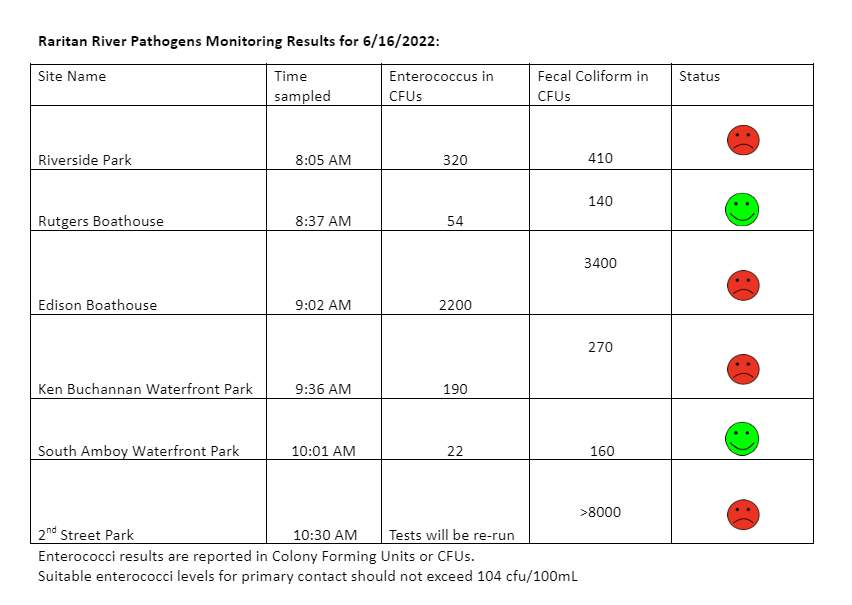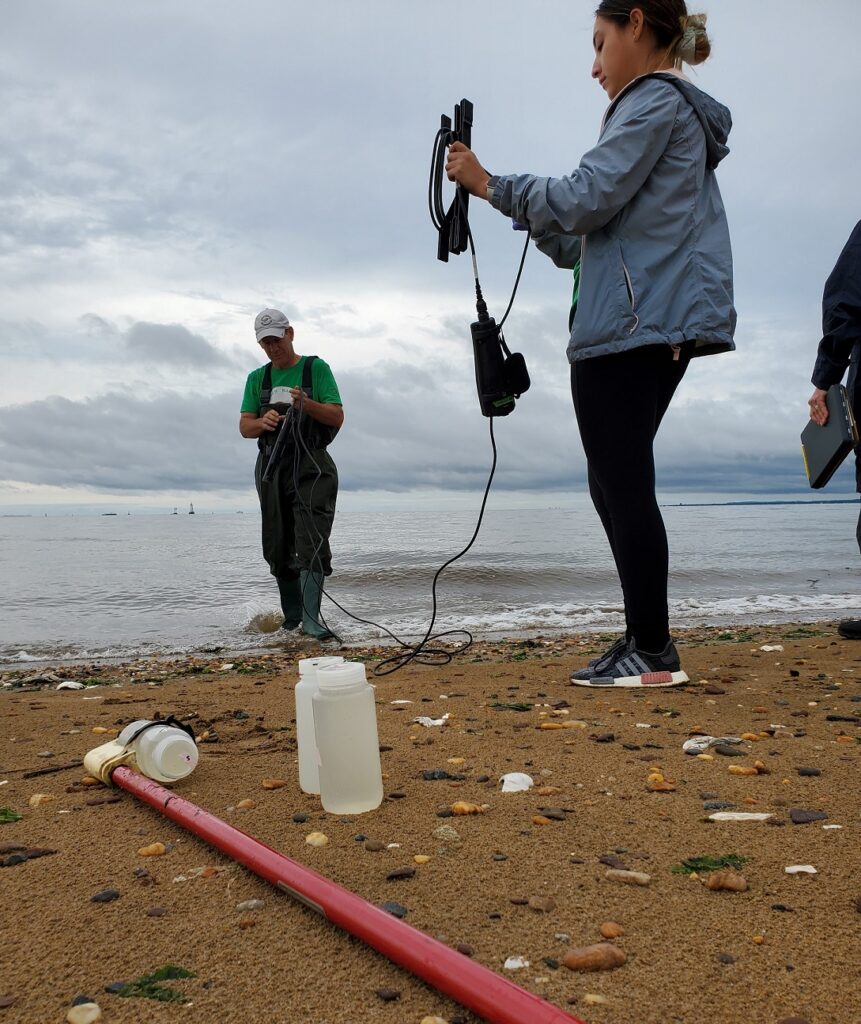6.16.2022 Raritan River Pathogens Results
The Lower Raritan Watershed Partnership and Rutgers Cooperative Extension of Middlesex County run a volunteer pathogens monitoring program from May to September every Summer. On Thursdays we collect water quality samples at 6 non-bathing public access beaches along the Raritan River, and report the results on Friday afternoons. See here for more information on our pathogens monitoring program.
Our monitoring results for June 16, 2022 are somewhat better than previous weeks, however we received about ½ an inch of rain while we were out in the field doing the sampling, which means that bacteria levels are most likely higher than test results indicate.

Enterococci results are reported in Colony Forming Units or CFUs. Suitable levels for primary contact activities (directly touching the water) should not exceed 104 cfu/100mL. Pathogens/Enterococci levels are used as indicators of the possible presence of disease-causing bacteria in recreational waters. Water samples taken at sites with green “smiley faces” are below federal Environmental Protection Agency (EPA) threshold for Enterococcus. Water samples taken at sites indicated with red “smiley faces” were above federal EPA threshold for Enterococcus and suggest potential health risks from pathogens. Pathogens may pose health risks to people fishing and swimming in a water body. Sources of bacteria include Combined Sewer Overflows (CSOs), improperly functioning wastewater treatment plants, stormwater runoff, leaking septic systems, animal carcasses, and runoff from manure storage areas. Please enjoy our waterways at your own risk!
Big thanks to our partners, Rutgers Cooperative Extension of Middlesex County and Interstate Environmental Commission, and to this week’s monitoring team Frank Dahl and Andrew Gehman, and of course to our Monitoring Outreach Coordinator Jocelyn Palomino.

